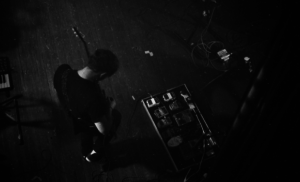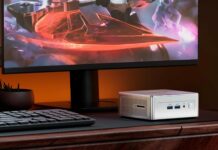
Special report: IEMs vs wedges
A raft of leading engineers and musicians talk gear preferences and the attest live monitoring methods.
For several years now, live performers have been moving increasingly towards IEMs (in-ear monitors) and away from the trusty wedge when it comes to monitoring their mix onstage. Here, Andy Coules speaks to a number of the industry’s top engineers and musicians to get their take on the subject and to find out what each of these monitoring methods has to offer…
Anyone involved in live performance, be they a musician or an engineer, must surely have noticed the trend towards the increased use of in-ear monitors (IEMs) over recent years. As the technology has gotten cheaper, its use has become more widespread, filtering down to every level of the industry. The consensus seems to be that IEMs are superior, as they eliminate the risk of feedback, allow us to reduce stage volume levels and enable us to deliver tailored mixes directly to the individual musicians (including clicks and cues). But is this trend truly a positive one? Have we switched one set of drawbacks for a different set?
Prior to the harnessing of electricity, musical ensembles performed acoustically – everyone could hear themselves and those around them, the conductor kept everyone in time and controlled the overall dynamics of the mix. The first electric public address systems started appearing at the beginning of the 20th century and, as their name suggests, were predominantly used to amplify the human voice to address large crowds. But they soon found regular use elevating singers above the level of their backing bands. When solid state electronics made bigger amplifiers possible in the 1950s, singers started to struggle not just to be heard but also to hear themselves and thus stay in tune; some kind of fold back was clearly required. The earliest stage monitors typically involved speaker columns pointed inwards towards the singer, which carried a copy of the FOH mix (similar to the modern use of side fill). At some point someone hit upon the idea of cutting the corner off a speaker cabinet, enabling them to place it on the stage pointing up at the artist and thus the wedge monitor was born.
FOH engineers of the day were not at all happy with this development. Mick Kluczynski (sound man for Pink Floyd) observed in 1972 that once wedge monitors appeared they “spread like a virus” and he suddenly found himself competing nightly with a secondary rear facing sound system. The irony here is that in trying to deal with the increasing levels of live performance, the solution introduced even more noise, which had the ability to bounce around and adversely affect the intelligibility of the mix.
Then, in the 1980s, FOH engineer Chrys Lindop started experimenting with in-ear monitoring and developed a basic wireless system by combining a low powered FM transmitter (designed for community radio) with a pocket FM receiver, a multi-band limiter and a set of Sony Walkman earbuds. He used this set-up with Stevie Wonder at one of his Wembley Stadium concerts to deliver his monitor mix directly to his ears and enable him to move about freely. This set-up had the added advantage that his minder could guide his movements by talking directly to him. Lindop then joined forces with electrical engineer Martin Noah to form Garwood Communications, which went on to produce the first commercially available in-ear system in 1987, known as the Radio Station. Lindop then came up with the idea of stripping down a set of Walkman earbud drivers and embedding them in a custom shell fashioned from an impression of the user’s ear and thus the modern in-ear monitor was born.
Aside from the obvious advantages of eliminating the risk of feedback and reducing stage volume, IEMs also overcame the physical limitations of working on big stages with wedges. Artists were no longer restricted to standing in the sweet spot where their monitors focused and could roam freely about the stage without having to worry about the timing delays, which could quickly make it impossible to perform. It’s no coincidence that the age of IEMs coincides with the age of increasingly sprawling and elaborate arena and stadium shows.
To find out if the trend towards IEMs is truly the golden age of stage monitoring, PSNEurope spoke to a number of people about their views on the subject. Participants included composer/producer/multi-instrumentalist Andy McDonnel (Petite Noir, Scott Walker, Mount Kimbie, Martin Creed), session musician/musical director/producer Ben Chetwood (Little Boots, Rudimental, Delilah, Damian Lazarus), trumpet player Joe Auckland (Madness, Noel Gallagher’s High Flying Birds, The Horne Section), drummer/percussionist/backing vocalist Mez Clough (Van Morrison, Madness, Mez and the Fezzes), monitor engineer Mikey Gibbard (Simple Minds, Cat Stevens, Stone Roses) and production manager (and lapsed monitor engineer) Pete Abbott (Lana Del Rey, Dua Lipa, MIA). Here, we ask them what they and the artists they’ve worked with prefer…
Andy McDonnell: I used to love wedges but as IEMs have improved and my interest in ear preservation has increased, I now prefer IEMs, although the experience differs depending on what instrument I’m playing. I found bass an easy one to be on ears due to the clean and compressed signal, but when playing saxophone I struggle with tone due to the IEMs resonating with my jaw and the instrument, but I appreciated the monitoring of the instrument as sax can get lost on stage with wedges.
Ben Chetwood: I regularly use IEMs but I’m on the fence as to whether I prefer them to wedges. IEMs are clearer and great for vocals but the good ones are expensive and you need a decent monitor engineer to get the best out of them.
Joe Auckland: I use both but I probably have a slight preference for wedges, as long as the onstage volume isn’t too loud. For brass players IEMs take a lot of getting used to; if they’re moulded you tend to hear a lot of what’s happening in your mouth, which is tricky, hence my preference for wedges. Having used IEMs for several years I’ve gotten used to them and there are definite benefits – consistency of your sound night after night being the main one I would say.
Mez Clough: Wedges, for me. I’m old fashioned. I can see the obvious benefits of IEMs and have had a mainly positive experience using them. The only downside for me is I feel a sense of detachment and a slight degree of isolation from the other band members onstage (as well as the audience). Given the choice, I think I would always opt for an old-school wedge, as I like the raw sound of the band and enjoy being able to hear the audience.
Mikey Gibbard: I prefer IEMs for sure – you have so much more control for the artists – but nothing beats the vibe of a great sounding wedge.
Pete Abbott: It’s completely artist dependent. I have worked with musicians who, although they prefer the mix of IEMs, will always choose wedges for the visceral thrill they bring.
Back when wedges were the only available option, musicians and monitor engineers were never expected to bring along their own monitor speakers, but the rise of IEMs has promoted an interesting shift in the ownership of the monitoring equipment. PSNEurope asked everyone if they felt they now needed to provide their own ear buds.
Joe Auckland: I don’t think it’s unreasonable to expect you to provide your own if you require custom moulds. I think artists should offer generics if they’ve chosen to go for in-ears over wedges. That said, if you work mostly with one artist it’s a nice gesture from them.
Pete Abbott: Yes, unless the artist wants to use a specific match.
Andy McDonnel: It depends. If someone is doing a sizeable tour with a signed artist and they’re touring with a silent stage then the artist/label should cover it, especially if there is no option for said musician to go on wedges. However, it helps for session musicians who are picking up occasional sessions or festivals to have their own.
Mez Clough: Yes – they’re part of your working kit really, in my opinion.
Mikey Gibbard: 100% yes, it’s part of your job now and they should be part of your tools.
Ben Chetwood: Yes, but if you lose them you may have to use generic ones which don’t offer as much protection (this happened to me on tour and I developed tinnitus!) Also your ears continue growing so you may have to buy new ones every few years.
Source: mi-pro.co.uk













